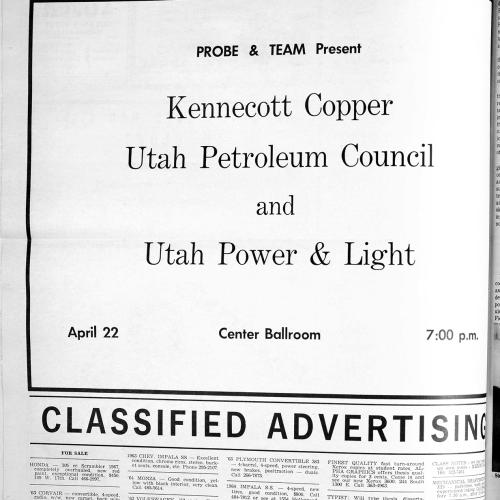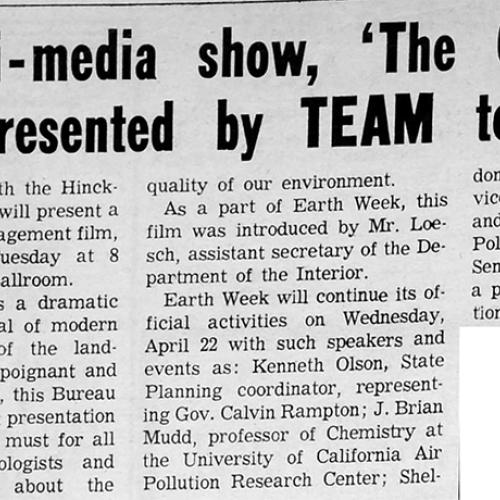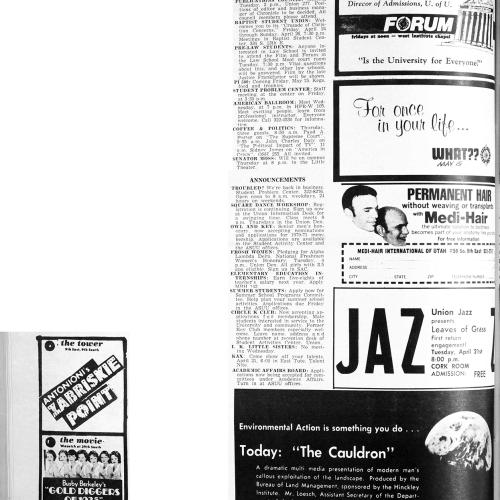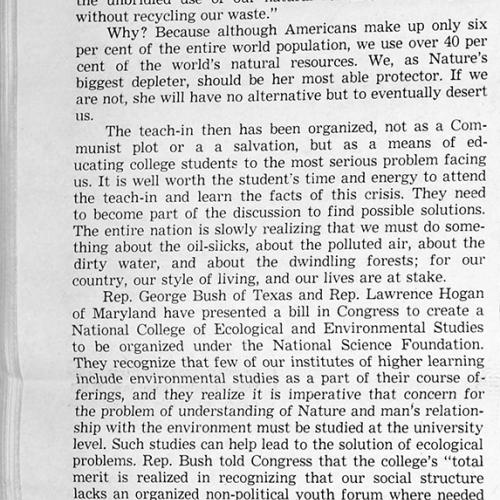A Limited Closed System: Science, Technology, and the First Earth Day
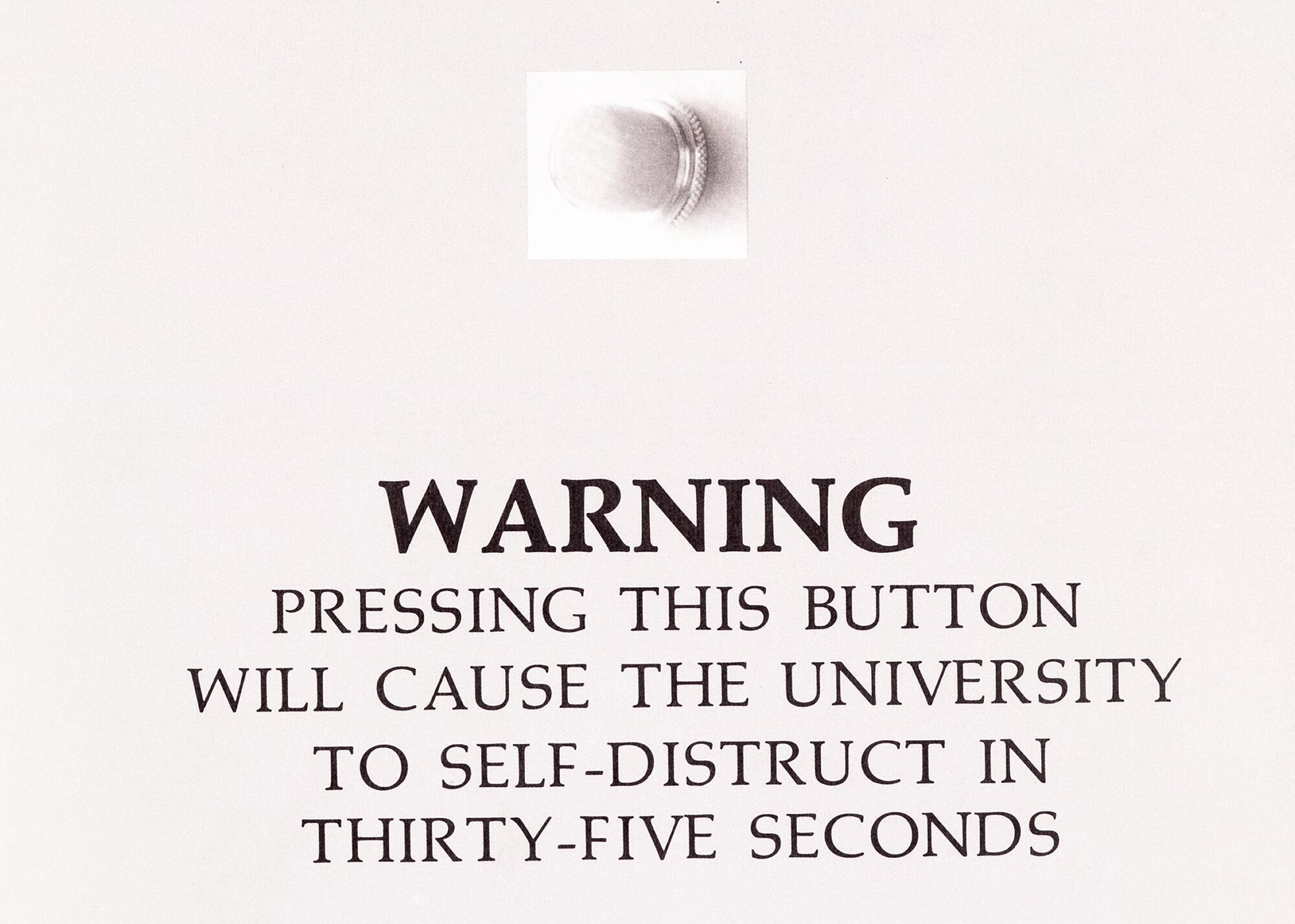
As time goes by, pollution and other excreta are liable to turn the planet Earth into a more horrible pigpen. Perhaps, the moon landing was one of the most demoralizing events in history in that the media revealed the planet Earth to be a limited closed system, not unlike the island in Lord of the Flies. As the Earth thickens with blood and waste, as the population increases, the stress factor could bring ‘the system’ to total frenzy.
– Robert Smithson, “Art and the Political Whirlpool, or the Politics of Disgust,” Artforum, 1970
The breakneck pace at which the western juggernaut has been rumbling down the seven-lane one-way government-built turnpike to oblivion has increased the number of vagabonds along the road by a considerable amount.
– University of Utah Utonian, 1971
The artist, ecologist, and industrialist must develop in relation to each other, rather than continue to work and to produce in isolation.
– Robert Smithson, “Proposal,” Unpublished proposal for the reclamation of a strip mine site in terms of Earth Art and its relation to the Ohio State University Conference on Art Education, 1972
Robert Smithson possessed a lifelong interest in the effects of the natural world, whether found in the structure of crystals or in the strata of minerals and fossils embedded below the Earth’s crust. Cartography also held special significance for the artist, seeing in maps evidence of landscapes in constant flux. Unlike his eco-minded peers, he courted mining corporations and airport officials – typically targets of those fighting for environmental preservation – incorporating elements such as the Bingham Copper Mining Pit in Utah into his own work.
Just as Smithson was settling Spiral Jetty’s last bits of basalt into place on the north side of Great Salt Lake, global ecological concerns were being addressed on the University of Utah campus. Many students were passionate about the topic, a subject frequently covered in campus publications including the 1969-1970 Utonian, the U’s yearbook. In April, the University hosted a week-long series of events featuring author Edward Abbey, Senator Frank Moss, oil industry executives, and government officials, culminating in film screenings and a multi-media exhibition to mark the first annual Earth Day on April 22, 1970. Students and citizens across the globe gathered for the first time on this day, as campuses around the United States conducted “teach-ins” that brought a wave of media attention to their concerns.
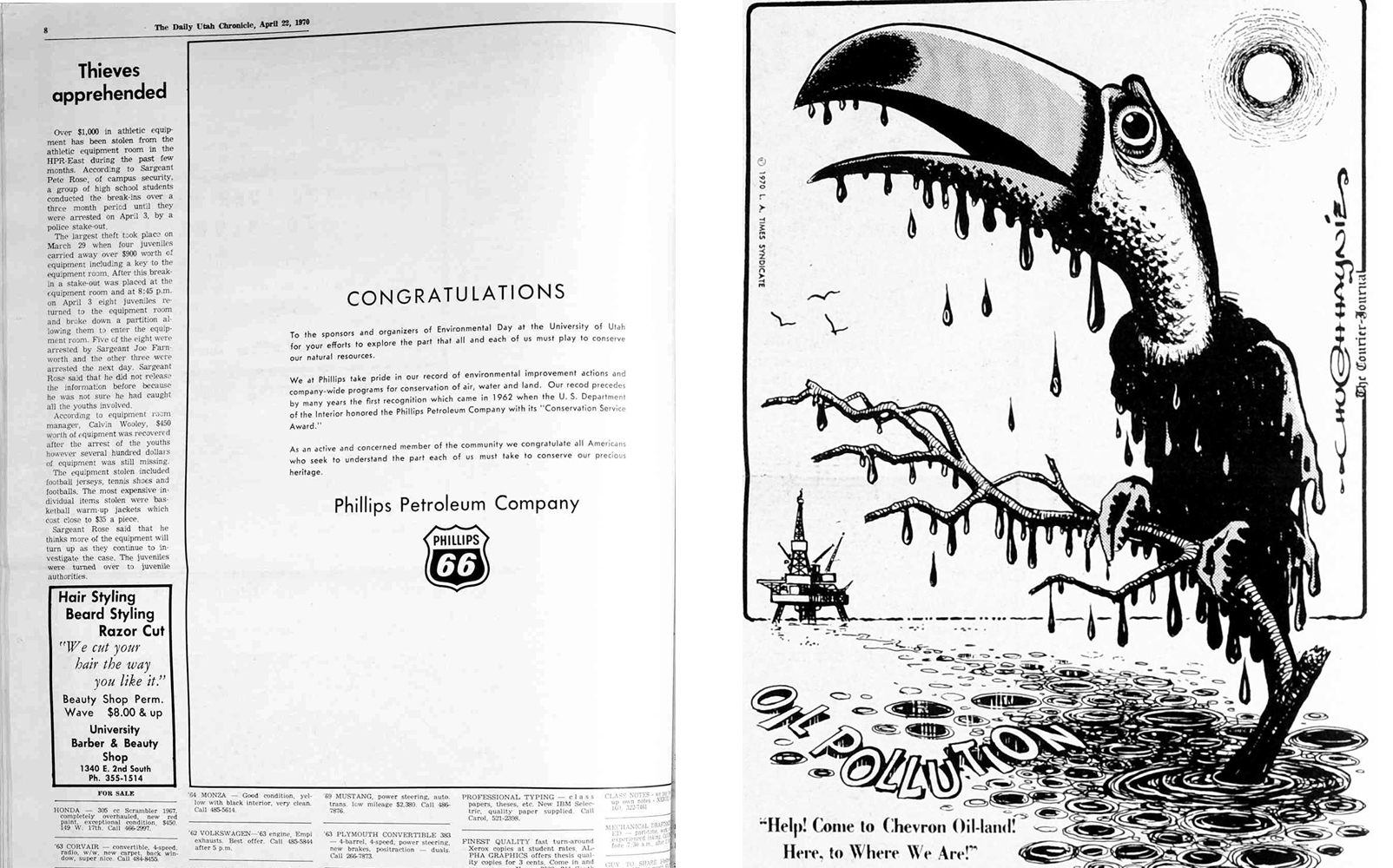
Recognition of Earth Day celebrations came from some unexpected sources, such as this congratulatory message from the Phillips Petroleum Company, who purchased a ¾ page advertisement in the Utah Daily Chronicle to declare their commitment as a corporation to environmental issues. The company may have had a hard sell, as the illustration from the Los Angeles Times, reproduced in the same issue of the Chronicle, suggests.
Skepticism about the oil industry ran high after a massive crude oil spill in the Santa Barbara channel became the subject of public outrage in 1969, which hastened the establishment of the U. S. Environmental Protection Agency in 1970. Many students reading the corporation's Earth Day message in the Chronicle would have recalled how Phillips Oil found itself at the center of a scandal when its Platform Hogan caused the devastating spill, in spite of assurances from both corporate executives and the Secretary of the Department of the Interior, Stewart Udall, that it posed no environmental threat.
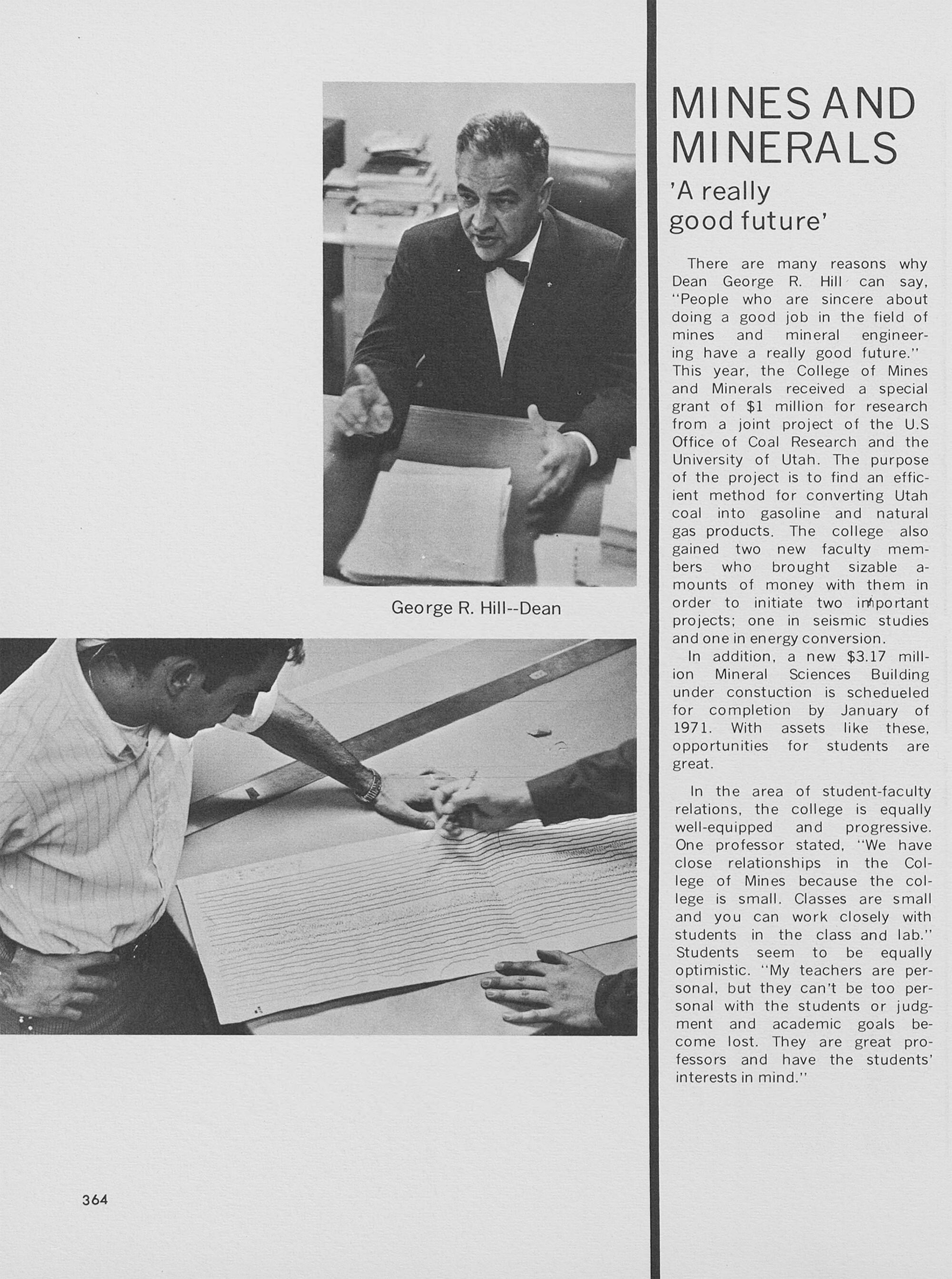
Dean Hill painted a rosy picture for those enrolling in the College of Mines and Minerals in 1970; however, it was not an easy time to convince prospective students. The environmental impacts of the mining industry were a target of ecologically-minded students on campus, as they made known during a week-long “teach-in” in April of that year. Earth Day continues to be celebrated annually on April 22nd at the U and around the globe. View the 1970 Utonian at the J. Willard Marriott Digital Library.
View Spiral of Sulphur on the UMFA's collection database.
Robert Smithson (1938 – 1973), Spiral of Sulphur, 1970, pencil and crayon on paper, 24 x 18 15/16 in., Purchased with funds from the National Endowment for the Arts, UMFA1970.029.001
As I look around the margins of this map, I see a ranch, a place called the Sulphur pond; falls, and a water tank; the word pumice. But it’s all very elusive. The shoreline tells you nothing about the shore. You’re always right between two worlds, one that is and one that isn’t.
– Robert Smithson, "Discussions with Heizer, Oppenheim, Smithson," Avalanche, Fall, 1970
Smithson frequently referenced minerals and geology in his writing and incorporated the raw materials into his artwork. Here, sulfur is the main ingredient taking on a spiraling pattern that was much enlarged in Smithson’s earthwork. Mined since antiquity, sulfur was traditionally extracted from volcanic regions and salt domes. Biblically referenced as “brimstone,” sulfur is used for glass production as well as to create fireworks, matches, and gunpowder. Smithson’s use here suggests the incendiary qualities of the element, which were similarly applicable to the contemporary events taking place while he created this work.
View Island of Buried Pipes on the UMFA's collection database.
Robert Smithson (1938 – 1973), Island of Buried Pipes, 1971, drawing, 19 x 24 in., Purchased with funds from the National Endowment for the Arts, UMFA1970.030.001.
Islands and industrial materials are recurring themes in Smithson’s work. In fact, Smithson’s original vision for Spiral Jetty was to use boats and barges to build an island on the Great Salt Lake. When Smithson visited Rozel Point, he encountered not only Utah’s natural landscape, but decaying rigging, piers, and even the ruins of buildings dotting the area, all evidence of abandoned attempts to extract valuable oil from the area’s tar seeps.
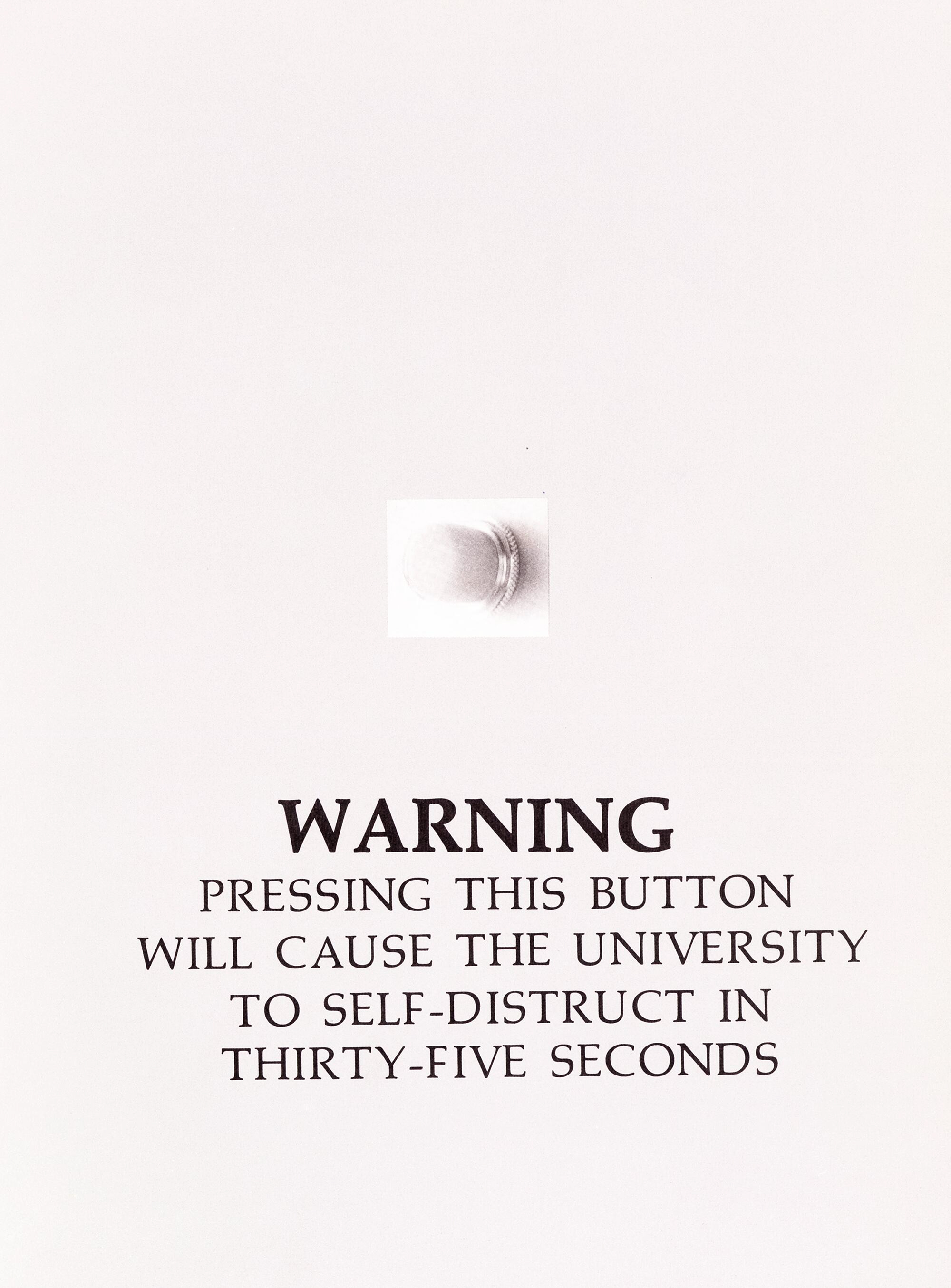
Questions for Closer Looking
What evidence of mines and mineral extraction do we still see today across Utah?
How do people feel about mining today?
A Complex of Interlocking Forms: Campus Arts and Culture at the University of Utah
Going from Void to Void: Growing the UMFA
Utah on a Turning Globe: Campus of Discontents
A Limited Closed System: Science, Technology, and the First Earth Day
The Will to Respond: Arts and Culture Answer Back
Time Trip Resources

